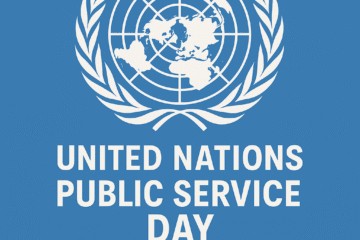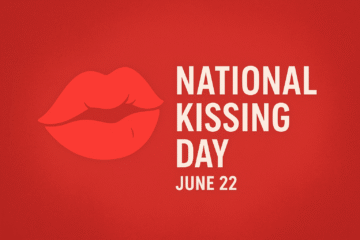
New Year’s Eve – December 31, is one of the most celebrated nights worldwide, marking the transition from one year to the next. This festive occasion is steeped in tradition, revelry, and an array of customs that vary across cultures. From spectacular fireworks to heartfelt resolutions, let’s explore the essence of this globally cherished holiday.
The History of NEW YEAR’S EVE – December 31
New Year’s Eve traces its origins to ancient civilizations. The earliest recorded celebrations date back to Babylon around 2000 BCE, where the new year was observed in March during the vernal equinox. It wasn’t until 46 BCE, when Julius Caesar introduced the Julian calendar, that January 1 became the official start of the year. December 31, therefore, became a significant day for revelry and reflection.
Modern Traditions Around the World
Fireworks: A Spectacular Sight
One of the most iconic elements of New Year’s Eve – December 31, is the dazzling display of fireworks. Cities like Sydney, New York, and Dubai compete to present the most mesmerizing shows, lighting up the sky as the clock strikes midnight.
- Sydney, Australia: The Sydney Harbour Bridge and Opera House serve as the backdrop for one of the world’s largest firework displays.
- New York, USA: The Times Square Ball Drop draws millions of spectators both in-person and online.
- Dubai, UAE: The Burj Khalifa hosts a breathtaking laser and fireworks spectacle, attracting global attention.
Midnight Feasts and Toasts
Food and drink play a central role in New Year’s Eve celebrations. Lavish feasts are prepared, often featuring traditional dishes believed to bring luck and prosperity. Champagne toasts at midnight symbolize joy and success for the year ahead.
Popular New Year’s Eve Dishes
- Grapes in Spain: Eating 12 grapes at midnight is a Spanish tradition, each grape representing a wish for the coming year.
- Hoppin’ John in the Southern USA: A dish made of black-eyed peas, rice, and greens is eaten for luck and wealth.
- Oliebollen in the Netherlands: These deep-fried doughnuts are a beloved treat during Dutch New Year’s Eve festivities.
Resolutions: Setting Intentions
Making resolutions is a time-honored custom on New Year’s Eve December 31. This practice involves reflecting on the past year and setting goals for personal growth in the upcoming year. Common resolutions include adopting healthier lifestyles, advancing careers, and nurturing relationships.
The Symbolism of NEW YEAR’S EVE – December 31
New Year’s Eve is not just a celebration; it’s a symbolic farewell to the past and a hopeful embrace of the future. The countdown to midnight, the collective cheer, and the shared moments of joy reflect humanity’s enduring optimism.
Celebrating NEW YEAR’S EVE – December 31 in Iconic Locations
New York City, USA
The Times Square Ball Drop is arguably the most famous New Year’s Eve celebration. Millions gather to watch the glittering ball descend during the final 60 seconds of the year.
Rio de Janeiro, Brazil
Copacabana Beach hosts a vibrant party with live music, dancing, and a spectacular firework display. Many attendees wear white to symbolize peace and renewal.
Tokyo, Japan
In Japan, the New Year’s Eve celebration, or Ōmisoka, includes eating Toshikoshi Soba (year-crossing noodles) and participating in temple bell-ringing ceremonies.
How to Plan the Perfect NEW YEAR’S EVE – December 31 Celebration?
-
Choose Your Venue Decide between hosting a cozy gathering at home or attending a public celebration.
-
Decorate with Festive Flair Incorporate elements like glittering lights, balloons, and banners to set the mood.
-
Curate a Playlist Music is essential for a lively atmosphere. Include both classic hits and contemporary favorites.
-
Prepare a Memorable Feast Offer a mix of appetizers, main courses, and desserts that cater to diverse tastes.
-
Countdown Activities Engage guests with games, a countdown video, or a group toast to welcome the new year.
Safety Tips for NEW YEAR’S EVE – December 31
- Plan Transportation: Arrange for designated drivers, taxis, or rideshares to ensure safe travel.
- Monitor Fireworks Usage: Follow local regulations and prioritize safety when handling fireworks.
- Stay Hydrated: Balance alcoholic beverages with water throughout the night.
- Avoid Overcrowded Areas: Be mindful of personal space and health precautions in public celebrations.
Looking Ahead to the New Year
As we prepare to welcome the new year, New Year’s Eve – December 31 remains a powerful reminder of the importance of gratitude, hope, and connection. Whether celebrating with family, friends, or the global community, the spirit of this holiday unites us all.
Frequently Asked Questions (FAQs)
1. Why is New Year’s Eve celebrated on December 31?
Ans. New Year’s Eve is celebrated on December 31 because it marks the last day of the Gregorian calendar year. This date was established when the calendar was introduced by Pope Gregory XIII in 1582, and it has since been globally recognized.
2. What are common traditions for New Year’s Eve – December 31?
Ans. Common traditions include attending parties, enjoying fireworks, making resolutions, toasting with champagne, and participating in countdowns to midnight.
3. What are some unique New Year’s Eve customs around the world?
- Spain: Eating 12 grapes at midnight for good luck.
- Denmark: Jumping off a chair at midnight to “leap” into the new year.
- Japan: Ringing temple bells 108 times to cleanse the soul.
4. How do fireworks become a part of New Year’s Eve celebrations?
Ans. Fireworks are believed to ward off evil spirits and bring good fortune. They’ve become a universal symbol of celebration and are prominently displayed in major cities worldwide.
5. What foods are considered lucky to eat on New Year’s Eve?
- Black-eyed peas and greens in the Southern USA for wealth.
- Lentils in Italy to symbolize coins and prosperity.
- Round fruits in the Philippines for abundance.
6. Why do people make New Year’s resolutions?
Ans. The tradition of making resolutions dates back to ancient Babylonians, who promised to improve themselves as part of their new year’s celebrations. Today, it symbolizes a fresh start and personal growth.
7. What are the most iconic New Year’s Eve celebrations?
- Times Square Ball Drop in New York City.
- Sydney Harbour Fireworks in Australia.
- Copacabana Beach Party in Rio de Janeiro.
8. How can I celebrate New Year’s Eve safely?
Ans. Plan transportation in advance, avoid overindulging in alcohol, follow local firework regulations, and stay aware of your surroundings in crowded areas.
9. What are some alternatives to traditional New Year’s Eve parties?
Ans. Consider hosting a movie marathon, spending a quiet evening journaling and reflecting, or enjoying a cozy night with family and close friends.
10. What is the significance of the New Year countdown?
Ans. The countdown symbolizes the anticipation of a new beginning. It’s a unifying moment when people collectively celebrate the arrival of the new year with hope and excitement.


